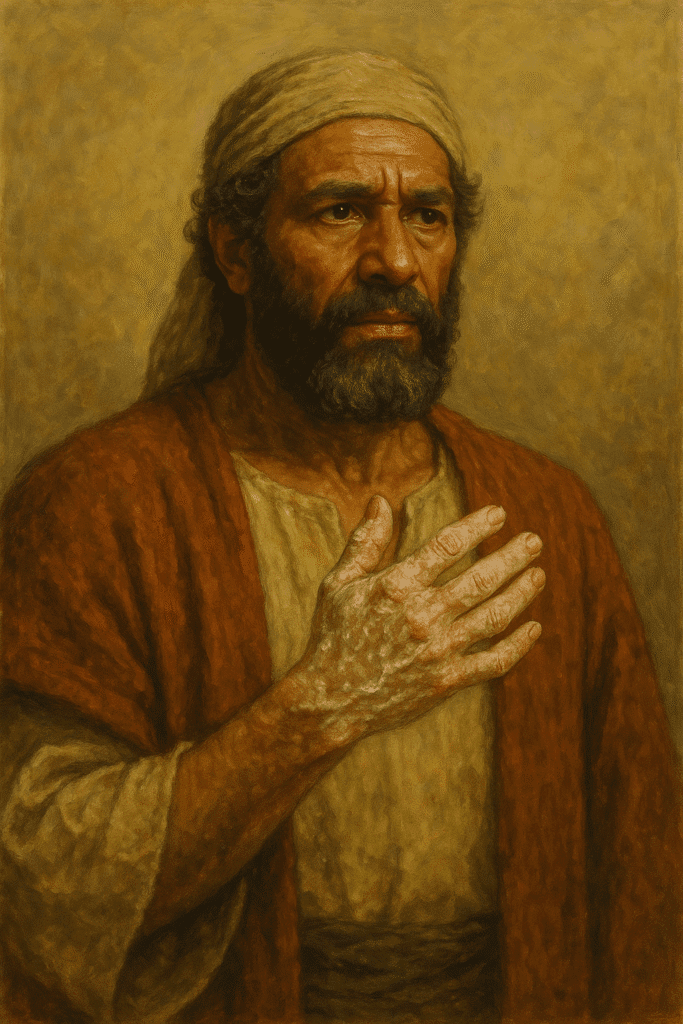Intro: Moses’ Sign and the Power of Moses’ Staff
Exodus 4 reveals how God confirmed His calling through Moses’ sign and the mighty rod that became known as Moses’ staff. Despite his doubts and hesitation, God equipped Moses with miraculous proofs and appointed Aaron to stand alongside him. This chapter is pivotal, marking the moment when Moses finally begins his journey back to Egypt. Read the full summary of Exodus Chapter 1 through 6 here.
The Miraculous Signs Given to Moses
When Moses worried Israel would not believe him, God provided clear demonstrations of divine power. Each miracle was a visible Moses’ sign that pointed to God’s authority:
- The Staff into a Serpent – Moses’ staff became a serpent and returned to a rod, showing power over Egypt’s symbols of authority. This was the first Moses’ sign, a demonstration that the Lord’s authority surpasses all earthly power.
- The Leprous Hand – Moses’ hand turned leprous and was healed again, displaying God’s control over sickness and restoration. This showed Israel that the Lord not only had power to strike but also to heal.
- Water into Blood – Nile water turned to blood when poured on dry ground, foreshadowing the plagues of Egypt. This powerful Moses’ sign served as a forewarning of the judgments that God would soon unleash.
These signs were not tricks but sacred proofs. They revealed that the God of Abraham, Isaac, and Jacob was truly with Moses. Later in the Bible, Elijah and Elisha would also confirm their ministries with miraculous works, following this same divine pattern of confirmation.
Moses’ Reluctance and God’s Response
Even after these mighty signs, Moses hesitated. He confessed that he was not eloquent, fearing his weakness in speech. God reminded him that He is the Creator of the mouth, able to give speech, hearing, or silence. In this dialogue, we see the tension between human weakness and divine power.
When Moses pleaded again for God to send someone else, God’s anger was kindled. Yet even in His anger, the Lord showed mercy by appointing Aaron to be Moses’ spokesman. God promised that Moses would speak to Aaron, and Aaron would relay the message to Pharaoh. In this way, Moses remained the chosen vessel, but Aaron became the mouthpiece.
This exchange reminds us that reluctance does not cancel God’s calling. Instead, the Lord provides what is needed to accomplish His will, whether through miracles, helpers, or direct empowerment.
The Journey Back with Moses’ Staff
At last, Moses accepted his calling and returned to Egypt carrying Moses’ staff, now called “the rod of God.” This was no longer just a shepherd’s tool—it was a divine instrument through which God would display His power. With Moses’ staff, the plagues would be unleashed, the Red Sea parted, and water would later flow from the rock in the wilderness.
God also reassured Moses that the men who once sought his life in Egypt were now dead. This divine reassurance allowed Moses to step forward without fear of past threats. Along the way, however, a mysterious and sobering event occurred. The Lord sought to kill Moses until Zipporah, his wife, quickly circumcised their son. This act emphasized the seriousness of covenant obedience. Before Moses could lead God’s people, his own household needed to be aligned with God’s commands.
Lessons from Exodus 4
Exodus 4 is more than history—it provides timeless lessons:
- God confirms His messengers with signs – The Moses’ sign gave proof that the Lord Himself had sent him.
- God transforms ordinary tools into instruments of power – Moses’ staff illustrates how God can use the most common object in our hands for extraordinary purposes.
- God strengthens the weak – Aaron’s appointment shows that God provides help when His servants feel inadequate.
- Obedience is essential – The episode with Zipporah and the circumcision demonstrates that God’s leaders must first walk in obedience themselves.
- Faith requires action – Moses had to pick up the staff, perform the signs, and take the first steps back toward Egypt. Faith is never passive; it moves forward in obedience.
Conclusion
Through the Moses’ sign and the power of Moses’ staff, God assured His people that their deliverer had been chosen. Despite human reluctance, God’s plan prevailed. The chapter closes with Moses ready to stand before Pharaoh, empowered not by his own strength, but by the authority of the living God.
For the full passage, read Exodus 4 (KJV) here. To explore the larger story of Israel’s deliverance, visit our Exodus hub article covering the journey chapter by chapter.
